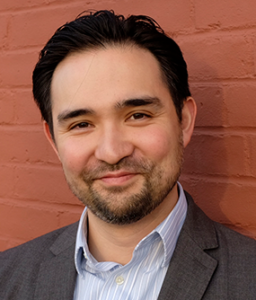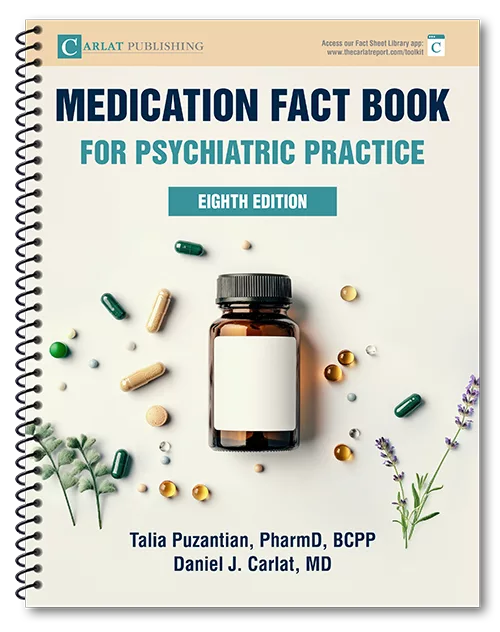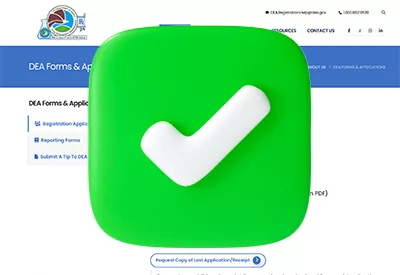Brixadi: A New Long-Acting Buprenorphine Option for Opioid Use Disorder
Crystal Obiozor, MD. Assistant Professor of Psychiatry, Yale University, New Haven, CT.
Noah Capurso, MD, MHS. Assistant Medical Director, Addiction Services Division, Connecticut Valley Hospital; Associate Clinical Professor of Psychiatry, Yale University; Editor-in-Chief, The Carlat Addiction Treatment Report.
Drs. Obiozor and Capurso have no financial relationships with companies related to this material.
Crystal Obiozor, MD. Assistant Professor of Psychiatry, Yale University, New Haven, CT.
Noah Capurso, MD, MHS. Assistant Medical Director, Addiction Services Division, Connecticut Valley Hospital; Associate Clinical Professor of Psychiatry, Yale University; Editor-in-Chief, The Carlat Addiction Treatment Report.
Drs. Obiozor and Capurso have no financial relationships with companies related to this material.
Buprenorphine, a partial mu-opioid receptor agonist, is a first-line treatment for opioid use disorder (OUD). Initially only available as a sublingual (SL) tablet, in recent years many new formulations have come onto the market. The latest addition is the long-acting injectable (LAI) Brixadi, which shares similarities with Sublocade but also offers key differences (see CATR Jan/Feb/Mar 2023 for more on Sublocade). Brixadi is still quite new, and consequently it is the least well studied of all the buprenorphine formulations. Nonetheless, it may be a helpful option for some of your patients. Below, we’ll explore what Brixadi brings to the table, the supporting evidence, and how to use it in clinical practice.
How is Brixadi different from Sublocade?
While both medications are LAI versions of buprenorphine, Brixadi differs from Sublocade in several ways.
Dosing flexibility
Brixadi offers seven doses, whereas Sublocade has only two.
Formulation options
Brixadi is available in weekly and monthly formulations, while Sublocade is only available as a monthly injection (which can be given every other month). The weekly option may be indicated for patients who could benefit from closer monitoring.
Induction timing
Brixadi can be started earlier in OUD treatment than Sublocade, which requires the patient to have moderate withdrawal symptoms and to have had at least one dose of SL buprenorphine before the first dose. In contrast, studies have shown that weekly Brixadi can be given before significant withdrawal symptoms develop, making it a promising option for rapid induction in acute care settings (D’Onofrio G et al, JAMA Netw Open 2024;7(7):e2420702). See accompanying Research Update on page 10 for details.
Injection experience
Brixadi has a smaller injection volume (0.16–0.64 mL vs 0.5–1.5 mL for Sublocade) and uses a thinner 23-gauge needle instead of a 19-gauge needle, making injections less painful for most patients (Blue TR et al, J Addict Med 2025; Epub ahead of print). For reference, a 23-gauge needle is slightly larger than an insulin syringe, and a 19-gauge needle is nearly twice the diameter.
How effective is it?
Brixadi has not been as well studied as other buprenorphine formulations, though the existing research has been promising. The strongest evidence for Brixadi’s efficacy comes from a double-blinded, placebo-controlled Phase 3 trial in which 428 participants were randomized to receive either Brixadi or SL buprenorphine. Researchers found that Brixadi worked at least as well as SL buprenorphine (non-inferior) in its ability to curb use (Lofwall MR et al, JAMA Intern Med 2018;178(6):764–773).
Additionally, patient preference studies suggest Brixadi may be more desirable than other formulations. One study found that patients receiving Brixadi reported higher satisfaction and lower treatment burden compared to those on SL buprenorphine (Lintzeris N et al, JAMA Netw Open 2021;4(5):e219041). Another small study reported that patients who had experience with both Brixadi and Sublocade preferred Brixadi due to reduced injection site pain and discomfort (Blue et al, 2025).
How to use it
Administration
Brixadi comes as a prefilled syringe containing a lipid-based buprenorphine solution that solidifies into a crystalline gel upon injection, forming a slow-release medication depot. It can be stored at room temperature indefinitely and is administered subcutaneously in the abdomen, buttocks, thigh, or upper arm (though the upper arm is not recommended for new patients due to lower plasma concentrations). Weekly doses should be rotated among injection sites, while monthly doses do not require rotation.
The syringe comes in two pieces: the main body and a plunger that is screwed in prior to injection. Once the syringe is assembled, disinfect the patient’s skin, pinch the area to be injected, and insert the needle at a 90-degree angle, which is different than the 45 degrees for Sublocade.
The injection is quick, taking only a few seconds compared to the 30–60 seconds required for Sublocade. Brixadi is generally well tolerated, though mild injection site reactions (itching, redness, pain) may occur. Rare complications include injection site infection or skin breakdown.
Dosing
Patients stable on SL buprenorphine can switch to the weekly or monthly Brixadi formulation. Use the accompanying “Brixadi Dosing” table to determine the appropriate dose and discontinue buprenorphine the following day.
For buprenorphine-naïve patients, do the following:
- Administer a 4 mg SL test dose to check for precipitated withdrawal. Evidence suggests this step can be skipped in acute settings, but it remains best practice if feasible.
- If no withdrawal occurs, administer 16 mg of the weekly formulation.
- Within three days, give an additional 8 mg weekly dose.
- An extra 8 mg dose can be added any time during the first week if withdrawal symptoms or cravings persist.
- Future weekly doses should be based on the total amount received in the first week.
The monthly formulation can be given up to a week early or late, while the weekly formulation has a two-day window. If a dose is missed, administer the next one as soon as possible.
Is it right for your patient?
LAI buprenorphine provides an alternative to SL medication for patients struggling with adherence. It can also prevent misuse, diversion, and accidental pediatric exposure (Blair HA, Drugs Ther Perspect 2024;40(2):61–71). Beyond these more general benefits of an LAI option, there are additional considerations that may help you choose between Sublocade and Brixadi for your patients. For a side-by-side comparison table, see: www.thecarlatreport.com/BrixadivSublocade.

Advantages of Brixadi
- The greater volume of dosing options is useful for patients sensitive to over- or undermedication.
- Brixadi’s smaller injection volume and needle makes administration less painful than Sublocade.
- Early induction is preferred in acute settings like emergency departments (EDs).
- The weekly formulation allows more frequent monitoring and support for patients in need of structured care.
Advantages of Sublocade
- Sublocade’s longer half-life is beneficial for patients with poor adherence, reducing risk of withdrawal if a dose is missed.
- The every-other-month option is ideal for stable patients who prefer fewer clinic visits or have challenges traveling to a clinic.
Financial considerations
Brixadi costs approximately $500 per weekly injection and $2,000 per monthly injection, roughly on par with Sublocade. Medicaid covers the cost in many states, and private insurance patients may qualify for the manufacturer’s Copay Savings Program. Individual prescribers do not need any specialized certification, though clinics that dispense Brixadi must be registered with a Risk Evaluation and Mitigation Strategy (REMS) program. More information is available at www.brixadirems.com.
Carlat Verdict: Though still new and relatively untested in the “real world” compared to SL buprenorphine, Brixadi expands OUD treatment options by offering the advantages of an LAI formulation with greater dosing flexibility and a more tolerable injection experience than Sublocade. Its ability to be used early in withdrawal makes it particularly advantageous in acute settings like EDs and inpatient units. However, access barriers like REMS restrictions and cost may limit its availability.

Newsletters
Please see our Terms and Conditions, Privacy Policy, Subscription Agreement, Use of Cookies, and Hardware/Software Requirements to view our website.
© 2025 Carlat Publishing, LLC and Affiliates, All Rights Reserved.


_-The-Breakthrough-Antipsychotic-That-Could-Change-Everything.webp?t=1729528747)



